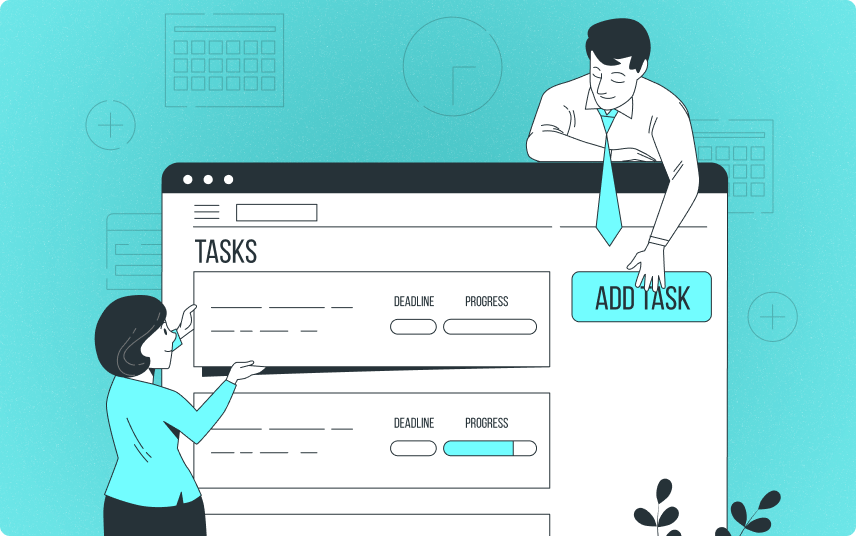What is a Sisyphean Task and How to Overcome it When Faced in Organizations?

Introduction
In the realm of Greek mythology, the story of Sisyphus is a well-known tale of eternal struggle. Sisyphus was condemned by the gods to roll a boulder up a hill, only for it to roll back down each time he neared the summit. This endless cycle of futile effort has since given rise to the term “Sisyphean task,” referring to any laborious and seemingly unending task that offers no real reward or sense of accomplishment. In modern organizations, Sisyphean tasks manifest in various ways, draining resources and demoralizing employees.
Understanding what constitutes a Sisyphean task and how to address such challenges is crucial for maintaining productivity and morale within organizations. This article delves into the nature of Sisyphean tasks, identifies common examples within organizational settings, and provides strategies to overcome these obstacles.
1. Understanding Sisyphean Tasks
A Sisyphean task is any endeavor that requires continuous effort without yielding significant progress or a tangible end result. These tasks often consume considerable time and resources, leading to frustration and burnout among those who undertake them. In organizations, such tasks can be the result of poorly defined goals, inefficient processes, or external constraints.
Characteristics of Sisyphean Tasks:
- Repetitiveness: The task involves repeating the same actions with no variation or progress.
- Futility: The effort invested does not lead to meaningful outcomes or improvement.
- Demoralization: Continuous engagement in such tasks can lead to low morale and disengagement.
Recognizing these characteristics is the first step in identifying and addressing Sisyphean tasks within an organization.

2. Common Examples of Sisyphean Tasks in Organizations
Sisyphean tasks can appear in various forms across different organizational contexts. Some common examples include:
1. Endless Meetings
Meetings that are held frequently without clear agendas or outcomes can become repetitive and unproductive. Participants may feel that their time is being wasted without any concrete decisions or actions resulting from these gatherings.
2. Constantly Revising Documents
When documents are repeatedly revised without clear direction or finalization, it leads to a cycle of continuous edits. This is particularly common in organizations with unclear approval processes or shifting requirements.
3. Redundant Reporting
Generating reports that are never reviewed or acted upon can be a major source of wasted effort. This often happens when reporting requirements are outdated or when there is a lack of alignment between reporting and decision-making.
4. Inefficient Workflows
Processes that involve unnecessary steps or approvals can create bottlenecks and reduce productivity. Employees may find themselves engaged in tasks that do not add value but are required due to outdated or poorly designed workflows.
5. Repetitive Data Entry
Manual data entry tasks that could be automated are a prime example of a Sisyphean task. Employees spend valuable time on repetitive data input, leading to errors and inefficiency.
Get more out of your business
Get the best employee engagement content every week via mailing list

3. The Impact of Sisyphean Tasks on Organizations
Engaging in Sisyphean tasks has several negative consequences for organizations:
1. Decreased Productivity
Time and resources spent on futile tasks could be better utilized on value-adding activities. This misallocation leads to overall lower productivity.
2. Employee Burnout
Continuous engagement in unproductive tasks can lead to frustration, stress, and burnout among employees. This, in turn, affects their motivation and engagement levels.
3. Low Morale
When employees feel that their efforts are not leading to meaningful outcomes, it can result in low morale and job satisfaction. This can impact team cohesion and overall organizational culture.
4. Increased Turnover
Persistent engagement in Sisyphean tasks can drive employees to seek more fulfilling opportunities elsewhere, leading to higher turnover rates and associated recruitment costs.
Recognizing these impacts underscores the importance of addressing Sisyphean tasks within organizations.
4. Strategies to Overcome Sisyphean Tasks
Addressing Sisyphean tasks requires a strategic approach that involves identifying the root causes, streamlining processes, and fostering a culture of efficiency and continuous improvement. Here are some effective strategies:
1. Clarify Goals and Objectives:
- Ensure that all tasks are aligned with clear, achievable goals.
- Use the SMART criteria (Specific, Measurable, Achievable, Relevant, Time-bound) to define objectives.
- Regularly review and adjust goals to ensure they remain relevant and achievable.
2. Streamline Processes:
- Conduct process audits to identify inefficiencies and redundancies.
- Simplify workflows by eliminating unnecessary steps and approvals.
- Implement automation tools to reduce manual and repetitive tasks.
3. Improve Communication:
- Foster open and transparent communication channels to ensure clarity and alignment.
- Use collaborative tools to streamline information sharing and reduce the need for excessive meetings.
- Provide clear instructions and expectations to minimize the need for constant revisions.
4. Empower Employees:
- Encourage employees to provide feedback on processes and suggest improvements.
- Involve employees in decision-making to ensure they feel valued and heard.
- Provide training and resources to help employees develop skills that enhance their efficiency.
5. Focus on Continuous Improvement:
- Implement continuous improvement methodologies such as Lean or Six Sigma to identify and eliminate waste.
- Encourage a culture of innovation where employees are motivated to find better ways of doing things.
- Regularly review and update processes to ensure they remain efficient and effective.

5. Case Studies: Overcoming Sisyphean Tasks
Examining real-world examples of organizations that have successfully addressed Sisyphean tasks can provide valuable insights and inspiration. Here are two case studies:
Case Study 1: Tech Company Streamlines Meetings
A mid-sized tech company faced issues with endless, unproductive meetings. By implementing a new meeting policy that required clear agendas, defined outcomes, and time limits, they were able to reduce the number of meetings and make them more focused and productive. As a result, employees had more time to dedicate to meaningful work, leading to increased productivity and morale.
Case Study 2: Manufacturing Firm Automates Data Entry
A manufacturing firm struggled with repetitive data entry tasks that were prone to errors. By investing in an automated data entry system, they significantly reduced the time spent on manual input and improved data accuracy. This allowed employees to focus on more strategic tasks, enhancing overall efficiency and job satisfaction.
Conclusion
Sisyphean tasks are a significant barrier to productivity and employee satisfaction within organizations. Recognizing these tasks and implementing strategies to address them is crucial for fostering a more efficient and positive work environment. By clarifying goals, streamlining processes, improving communication, empowering employees, and focusing on continuous improvement, organizations can overcome Sisyphean tasks and unlock their full potential.
Frequently Asked Questions
What are some tools that can help streamline processes and reduce Sisyphean tasks?
Various tools can aid in streamlining processes and reducing repetitive tasks. Workflow automation software, project management tools, and communication platforms can enhance efficiency. Tools like Asana, Trello, Slack, and Microsoft Teams can help organize tasks, facilitate collaboration, and automate routine activities.
How can I motivate employees who are frustrated with Sisyphean tasks?
To motivate employees facing Sisyphean tasks, involve them in identifying inefficiencies and suggesting improvements. Acknowledge their efforts and provide recognition for their contributions. Offering training and development opportunities can also help them acquire skills to work more efficiently. Creating a supportive environment where employees feel heard and valued is key to maintaining motivation.
What role does leadership play in overcoming Sisyphean tasks?
Leadership plays a critical role in addressing Sisyphean tasks. Leaders must set clear goals, communicate effectively, and foster a culture of continuous improvement. By empowering employees, providing necessary resources, and actively seeking feedback, leaders can drive the changes needed to eliminate futile tasks and enhance overall productivity.


